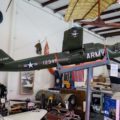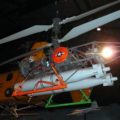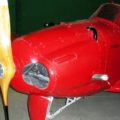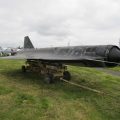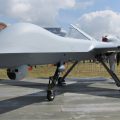
GAF Pika | |
|---|---|
| Pays | Australie |
| Rôle | Drone cible |
| Premier vol | 28 août 1952 |
| Construit | 517 |
Lla GAF Jindivik est un drone cible radiocommandé produit par l’Australian Government Aircraft Factories (GAF). Le nom vient d’un mot aborigène australien signifiant « Le chassé ». Deux prototypes à commande manuelle, ont été construits sous le nom de GAF Pika (Projet de preuve de concept pour tester l’aérodynamique, le moteur et les systèmes de contrôle radio, série A92-1/2, ‘B-1/2’. Le Jindivik radiocommandé a été initialement désigné Projet B et a reçu des publications en série dans la série A93. Pika est un mot aborigène australien qui signifie dépliant
Source: GAF Pika sur Wikipedia
| GAF Pika | |
|---|---|
| Photographe | Vladimir Yakubov |
| Localisation | Musée RAAF, Point Cook |
| Photos | 47 |
Kits connexes:
Trouver des kits sur eBay:
Voir aussi :
Lla GAF Pika was a piloted prototype of a radio-controlled target drone that was developed by the Australian Government Aircraft Factories (GAF) in the early 1950s. The Pika was used to test the aerodynamics, engine and radio control systems of the drone, which was later named Jindivik, an Aboriginal word meaning « Le chassé ». The Pika was powered by an Armstrong Siddeley Adder turbojet engine, which had a thrust of 500 kgf. The Pika had a wingspan of 5.79 m, a length of 7.49 m and a height of 1.92 m. It had a maximum speed of 756 km/h and a service ceiling of 9,754 m.
Two Pika prototypes were built and flown from Woomera airfield in South Australia. The first one, A93-1, made its maiden flight on 4 November 1950 and was destroyed in an accident in April 1951. The second one, A93-2, flew for the first time in April 1951 and had a longer nose and exhaust cone than the first one. It is currently preserved at the Musée de la RAAF at Point Cook, Victoria.
Vues : 1044


